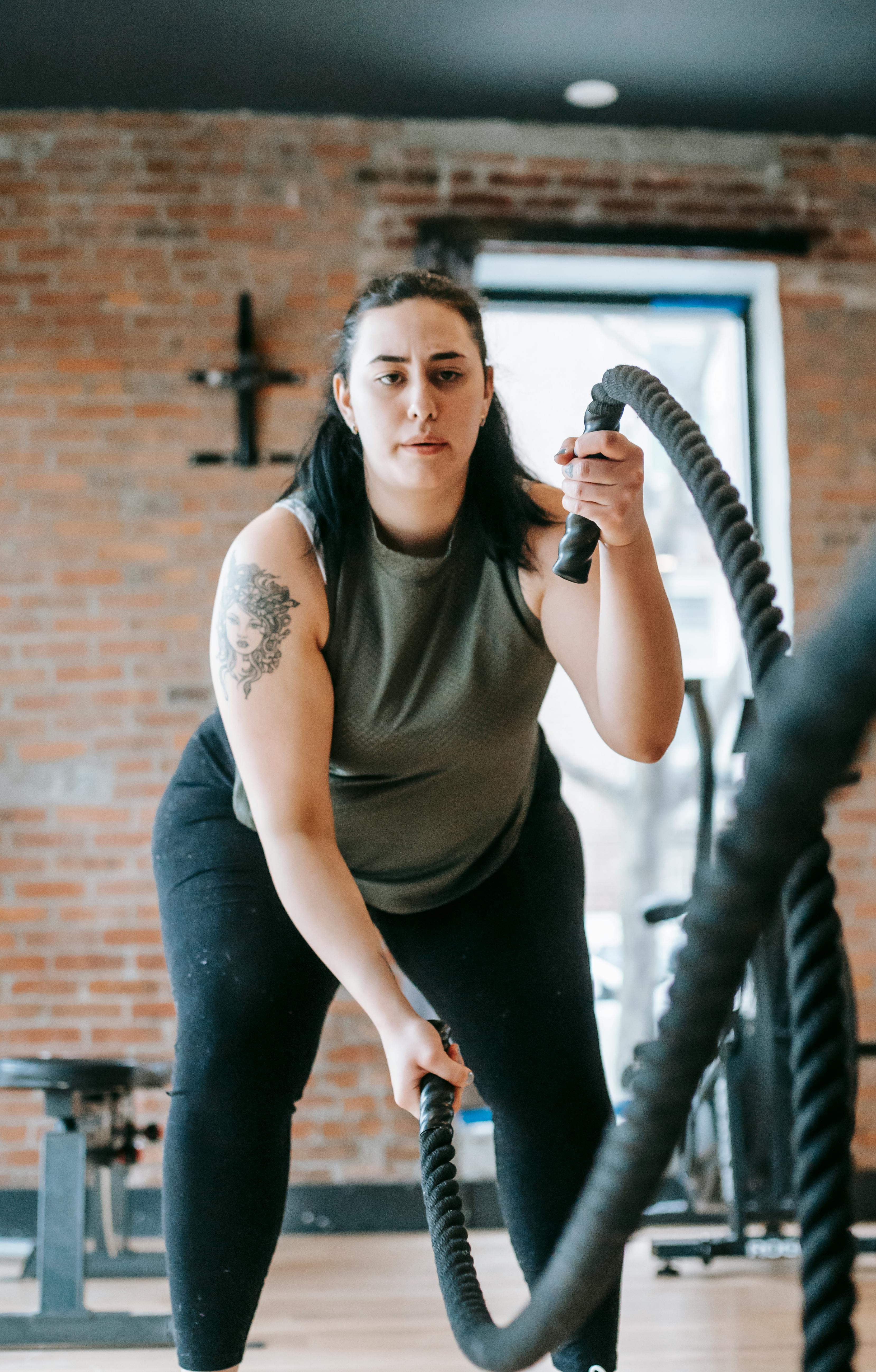Imagine feeling more energized, focused, and ready to take on the day with just a few deep breaths. Breathing exercises have long been praised for their ability to calm the mind and reduce stress, but did you know they can also have a profound impact on your energy levels? By simply taking the time to focus on your breath and engage in intentional breathing techniques, you can invigorate your body and boost your overall energy. In this article, we will explore how breathing exercises can have a direct effect on your energy levels, and how you can incorporate them into your daily routine to experience their benefits firsthand.
What are breathing exercises?
Definition of breathing exercises
Breathing exercises are deliberate techniques that involve controlling and regulating your breath in order to promote physical and mental well-being. These exercises can vary in their methods and goals, but they all prioritize conscious breathing as a tool for improving overall health and energy levels.
Types of breathing exercises
There are several different types of breathing exercises, each with its own unique focus and benefits. Some common types include diaphragmatic breathing, alternate nostril breathing, box breathing, Kapalabhati breathing, and bellows breath. Each exercise involves specific patterns and techniques to direct the flow of breath and enhance its effects on the body and mind.
Benefits of practicing breathing exercises
Practicing breathing exercises regularly can bring numerous benefits to your overall energy levels and well-being. Some of the benefits include increased oxygen flow to the cells, reduced stress and anxiety, improved focus and concentration, enhanced relaxation and sleep quality, and increased overall energy and vitality.
The connection between breathing and energy levels
Importance of oxygen in energy production
Oxygen plays a vital role in energy production within the body. When you engage in deep and controlled breathing exercises, you increase the amount of oxygen that reaches your cells, enabling them to produce energy more efficiently. By optimizing oxygen delivery, you can experience heightened energy levels and a greater sense of vitality.
Effects of shallow breathing on energy levels
Shallow breathing, often a result of stress or poor posture, limits the amount of oxygen that reaches your cells. Consequently, insufficient oxygen uptake can lead to decreased energy levels and feelings of fatigue. By practicing breathing exercises, you can expand your lung capacity and develop a habit of deeper, more efficient breathing, ultimately boosting your energy levels.
Link between stress and low energy
Stress is a common factor that drains energy from our bodies. When we are stressed, our breathing tends to become shallow and rapid, limiting oxygen flow and exacerbating feelings of fatigue. Recognizing and managing stress through breathing exercises can help regulate energy levels by promoting relaxation and reducing the physiological and psychological toll of stress.
How breathing exercises can improve energy levels
Breathing exercises offer a powerful tool for improving energy levels by addressing both the physical and mental aspects of fatigue. By consciously engaging in controlled breathing techniques, you activate the body’s relaxation response, reduce stress levels, increase oxygen intake, and enhance overall blood flow and circulation. This combination of physiological and psychological benefits can significantly boost your energy levels and invigorate your mind and body.

Specific breathing exercises for boosting energy
Diaphragmatic breathing
Diaphragmatic breathing, also known as belly breathing, involves consciously engaging the diaphragm muscle to draw air deep into the lungs. To practice this technique, sit or lie down in a comfortable position and place one hand on your abdomen. Inhale slowly through your nose, feeling your abdomen rise as you fill your lungs with air. Exhale through your mouth, allowing your abdomen to fall. Repeat this pattern for several minutes to enhance your energy levels.
Alternate nostril breathing
Alternate nostril breathing is a technique that balances and synchronizes the flow of breath through the nostrils. Start by sitting comfortably and using your right thumb to close your right nostril. Inhale deeply through your left nostril, then close the left nostril with your right ring finger, releasing the thumb from the right nostril. Exhale through the right nostril, then inhale through the right nostril and repeat the process. This practice can help harmonize energy flow and promote alertness.
Box breathing
Box breathing is a simple yet effective technique that involves equal-length inhalations, holds, exhalations, and holds. Begin by inhaling deeply for a count of four, holding the breath for a count of four, exhaling for a count of four, and holding the breath again for a count of four. Repeat this pattern several times, focusing on the rhythm of your breath. Box breathing can increase energy levels by calming the mind and encouraging conscious awareness.
Kapalabhati breathing
Kapalabhati breathing is a dynamic breathing exercise that involves forceful exhales and passive inhales. Sit in a comfortable position and focus on your breath. Inhale deeply, then sharply contract your abdominal muscles to forcefully exhale through your nose. Allow the inhalation to be passive and natural, then repeat the rapid exhalations. This technique is believed to cleanse and invigorate the body, promoting energy and vitality.
Bellows breath
Bellows breath, also known as Bhastrika, is a vigorous breathing exercise that involves rapid, forceful inhales and exhales. Start by sitting in a comfortable position with your hands on your knees. Take a deep inhale, then forcefully exhale through your nose while simultaneously inhaling forcefully. Repeat this rapid and rhythmic pattern for several rounds. Bellows breath is known to increase oxygen flow, invigorate the body, and stimulate energy.
Instructions for practicing breathing exercises
Finding a quiet and comfortable space
When practicing breathing exercises, it’s important to find a quiet and comfortable space where you can direct your focus inward without distractions. Choose a location where you feel relaxed and at ease, such as a peaceful corner of your home or a serene outdoor environment.
Assuming a relaxed posture
Sit or lie down in a posture that promotes relaxation and allows for deep breathing. Maintain a straight yet comfortable spine, aligning your head, neck, and back. Rest your hands gently on your lap or place one hand on your abdomen to help monitor your breath and connection with your body.
Focusing on the breath
Bring your attention to your breath, noticing the sensation of each inhale and exhale. Focus on the natural rhythm of your breath without attempting to control or force it. Be present in the moment, letting go of any distractions or thoughts that may arise.
Practicing rhythmic and controlled breathing
Engage in the specific breathing exercise of your choice, following the instructions and techniques associated with that particular exercise. Breathe deeply, smoothly, and rhythmically as you direct the flow of your breath according to the exercise’s pattern. Allow yourself to fully experience each breath and its effects on your energy levels.
Monitoring energy levels before and after each session
Before starting a breathing exercise session, take a moment to assess your energy levels and overall well-being. Notice any changes or improvements in your energy levels after completing the practice. Keep a journal or mental notes to track your progress and identify which breathing exercises have the most significant impact on your energy.

Scientific research on the impact of breathing exercises on energy levels
Studies on the effects of breathing exercises on energy
Scientific studies have explored the relationship between breathing exercises and energy levels, revealing promising findings. Researchers have investigated the physiological and psychological effects of various breathing techniques and their impact on energy, stress reduction, and mental well-being.
Findings from research experiments
Research experiments have consistently demonstrated that practicing breathing exercises can increase oxygen flow, reduce stress hormone levels, enhance heart rate variability, and improve overall energy levels. These findings support the notion that controlled breathing exercises positively influence energy production and can be an effective tool for managing fatigue and boosting vitality.
Analysis of physiological changes in the body
Physiological changes in the body during breathing exercises have been studied through measurements such as oxygen saturation, heart rate, and brain activity. These analyses have revealed that specific breathing techniques can modify autonomic nervous system functioning, leading to increased energy and relaxation responses. The precise mechanisms underlying these changes are still being explored but suggest a promising avenue for further research.
Combining breathing exercises with other energy-boosting techniques
Regular physical exercise
Regular physical exercise is a powerful way to improve energy levels and overall well-being. Combining breathing exercises with physical activity can optimize oxygen uptake, enhance cardiovascular health, and stimulate endorphin release. Engaging in activities such as yoga, Tai Chi, or jogging alongside breathing exercises can provide a comprehensive boost to your energy levels.
Optimal nutrition and hydration
Ensuring you have a well-balanced diet and stay adequately hydrated is essential for maintaining optimal energy levels. Nutrient-dense foods provide the body with essential vitamins, minerals, and macronutrients necessary for energy production. Combining proper nutrition and hydration with regular breathing exercises can significantly improve your overall energy and vitality.
Adequate sleep and rest
Quality sleep and rest are essential for recharging your body and revitalizing your energy levels. Establishing a consistent sleep schedule, creating a peaceful sleep environment, and practicing pre-sleep relaxation breathing exercises can promote better sleep quality. Combined with breathing exercises, sufficient rest contributes to improved energy levels throughout the day.
Stress management techniques
Stress management techniques, such as meditation, mindfulness, and journaling, can complement breathing exercises in bolstering energy levels. By incorporating these practices into your daily routine, you can cultivate emotional well-being, reduce stress levels, and optimize the effectiveness of your breathing exercises in promoting overall energy and vitality.

Recommended breathing exercise routines for different energy needs
Quick pick-me-up exercises for a midday energy slump
When experiencing a midday energy slump, select breathing exercises that provide an instant boost. Take a few moments to practice diaphragmatic breathing, focusing on slow, deep inhalations and exhalations to awaken your senses and energize your body.
Morning energizing routines
Begin your day by incorporating breathing exercises that invigorate and set a positive tone. Alternating nostril breathing can balance energy flow and clear mental fog, while bellows breath can jumpstart your energy levels and enhance wakefulness.
Pre-sleep relaxation exercises
Create a calming pre-sleep routine by engaging in gentle breathing exercises that promote relaxation and prepare your body for restful sleep. Box breathing or diaphragmatic breathing can help quiet the mind, release tension, and ensure you enter a peaceful sleep state.
Precautions and considerations when practicing breathing exercises
Consulting a healthcare professional
Before engaging in any new physical or breathing exercise routine, it is important to consult with a healthcare professional, especially if you have any underlying health conditions or concerns. They can provide individualized guidance and ensure that breathing exercises are safe for you.
Avoiding overexertion or hyperventilation
While breathing exercises are generally safe, it is important to avoid overexertion or hyperventilation during practice. Pay attention to your body’s signals and adjust the intensity of the exercises accordingly. If you feel lightheaded, dizzy, or have any discomfort, pause the exercise and return to normal breathing.
Understanding individual limitations
Each individual’s physical abilities and respiratory function vary. It is crucial to respect your body’s limitations when practicing breathing exercises. Start slowly, gradually increasing the duration and intensity of the exercises, and listen to your body’s cues to avoid strain or injury.
Being aware of potential side effects
Breathing exercises are generally safe and have minimal side effects. However, some individuals may experience temporary discomfort, such as lightheadedness or tingling sensations. If any unusual or persistent symptoms occur, discontinue the practice and seek medical advice.
Personal experiences and testimonials on the effectiveness of breathing exercises for energy
Stories from individuals who have tried breathing exercises
Many individuals have incorporated breathing exercises into their daily routines and reported significant improvements in their energy levels. From busy professionals to athletes and students, personal anecdotes suggest that breathing exercises can be transformative in restoring and sustaining energy throughout the day.
Positive changes in energy levels reported
Those who have consistently practiced breathing exercises often report increased energy levels, improved alertness, and a general sense of rejuvenation. By integrating breathing exercises into their lives, individuals have experienced enhanced focus, clarity, reduced fatigue, and increased productivity.
Improved focus, clarity, and productivity
Breathing exercises have shown to have a profound impact on mental clarity, focus, and overall productivity. By regulating the breath and calming the mind through conscious breathing, individuals report enhanced concentration and the ability to tackle tasks with renewed energy and mental agility.
Incorporating breathing exercises into a daily energy-boosting routine
Setting aside dedicated time each day
To maximize the benefits of breathing exercises, it is important to set aside dedicated time each day for practice. Schedule a time that works best for you, whether it is in the morning, during an afternoon break, or as part of your evening wind-down routine.
Creating a personalized routine
Tailor your breathing exercise routine to suit your specific needs and preferences. Experiment with different techniques, durations, and combinations of exercises to find what works best for you. Remember to listen to your body and adjust your routine as needed.
Tracking progress and energy improvements
Maintaining a record of your breathing exercise practice and tracking your energy levels over time can be a valuable tool for assessing progress and identifying trends. By noting your energy levels and any related changes alongside your breathing exercises, you can gain insight into which techniques have the most significant impact on your energy.
In conclusion, breathing exercises have the potential to enhance energy levels by optimizing oxygen flow, reducing stress, and promoting relaxation. With various techniques available, individuals can customize their routine based on their specific needs and preferences. By incorporating breathing exercises into a daily energy-boosting routine, combined with other healthy lifestyle practices, individuals can experience improved vitality, focus, and overall well-being. Remember to approach breathing exercises with proper guidance, respect your body’s limitations, and listen to its signals. With consistent practice and attention to personal progress, breathing exercises can become a valuable tool for enhancing energy levels and living a more energized life.

